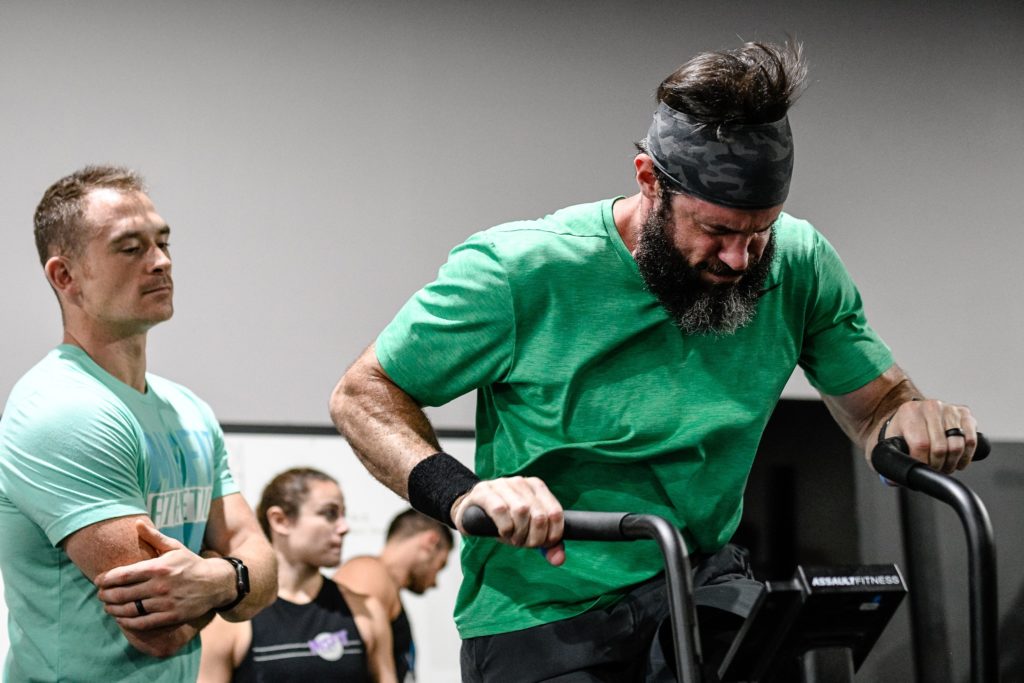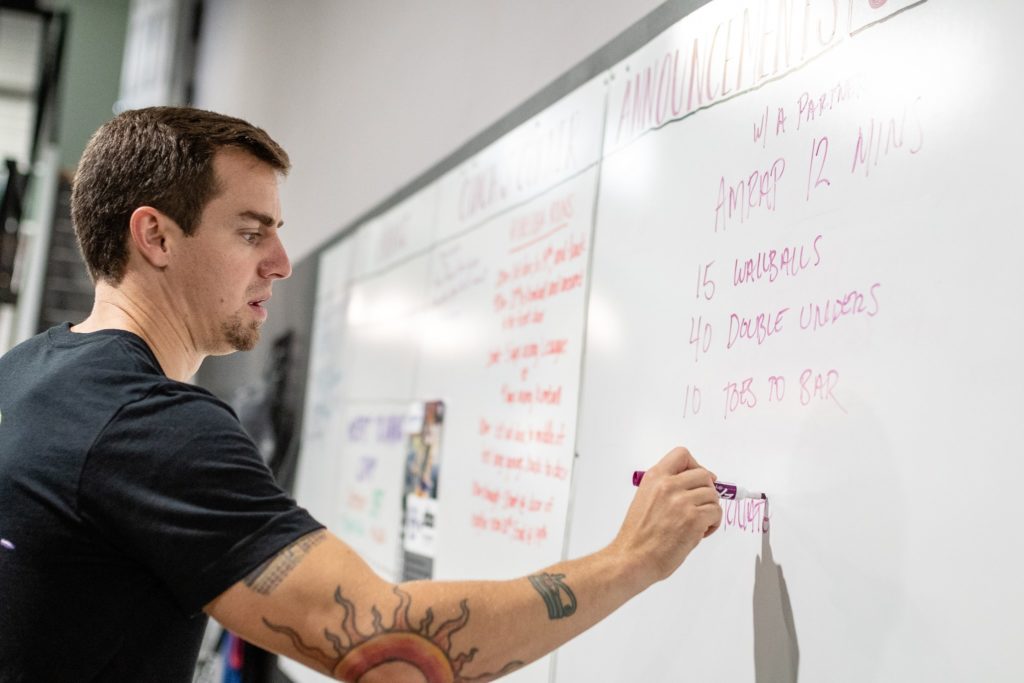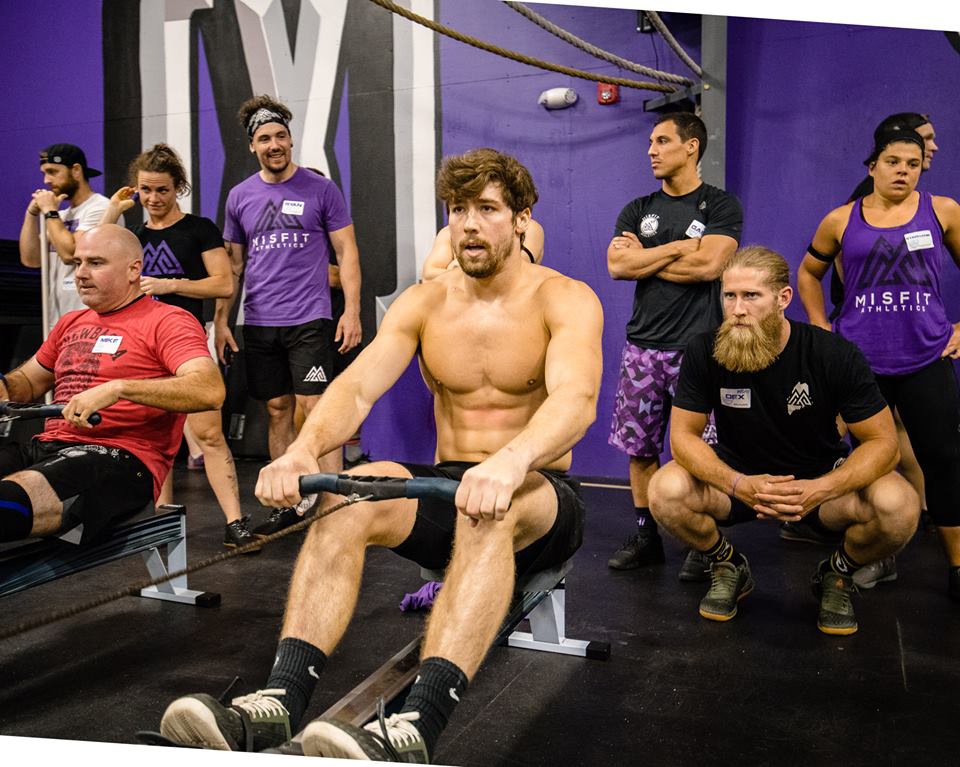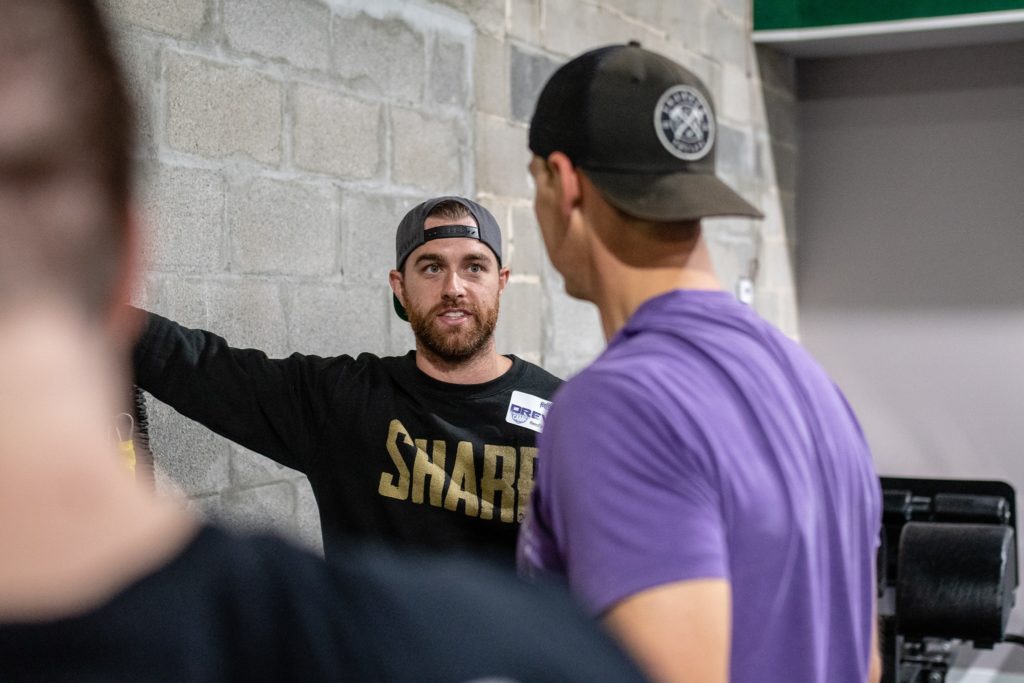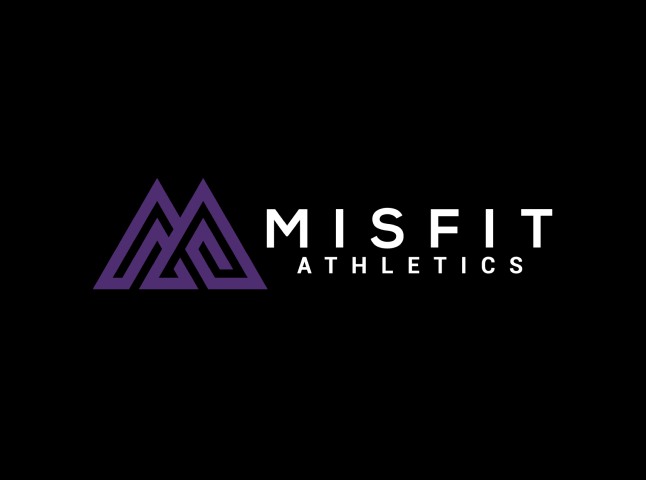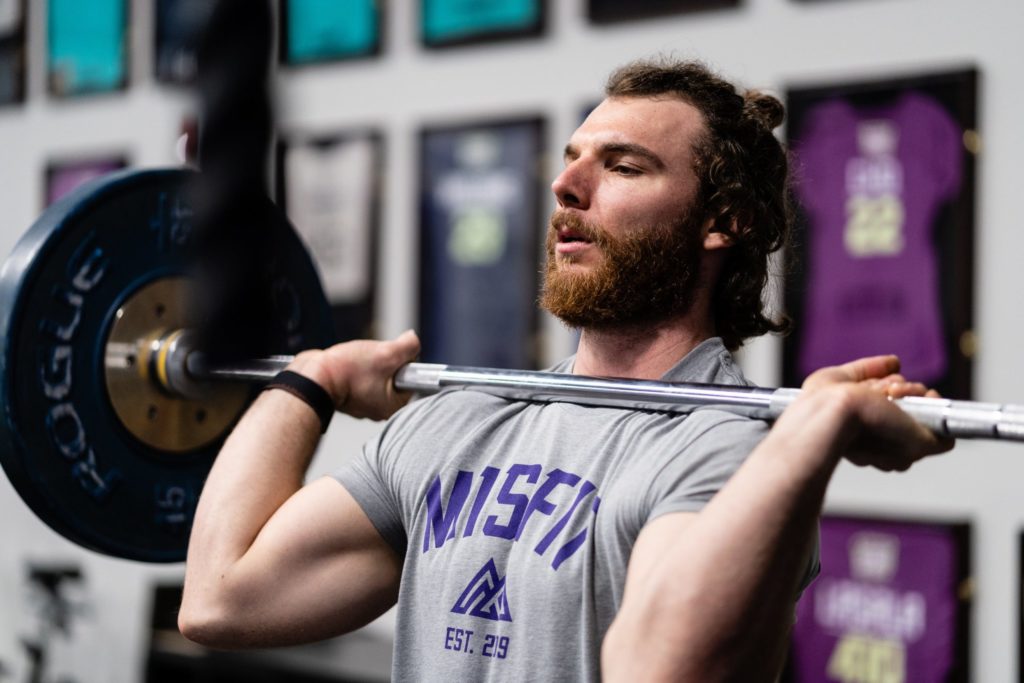Finding Your Blind Spots
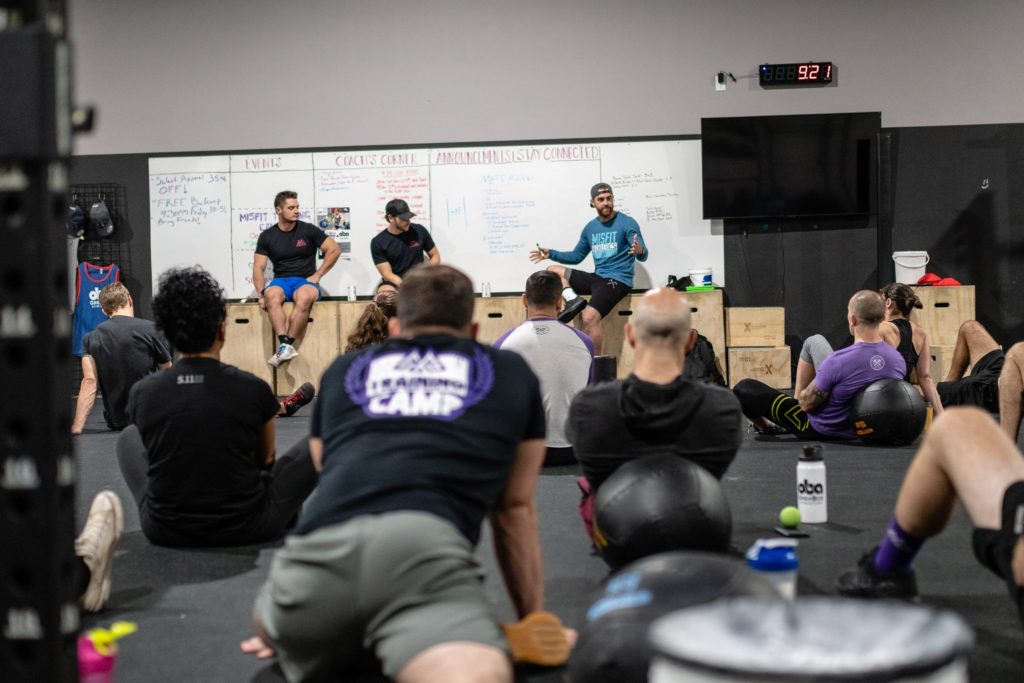
It’s high time we let you in on a little secret about remote coaching: when you have a coaching staff with decades of combined experience coaching some of the top athletes in the world, things like program design and movement adjustments are second nature. The hard work lives in the intuition and commitment to uncovering what is standing in your athlete’s way that they do not see. Some of these issues live right below the surface, and the fix is more about providing support than helping the athlete define something they are just struggling to acknowledge. Other problems are buried much deeper or even live fully outside of the athlete’s frame of reference. These are the blind spots that can transform an athlete in ways they previously could not dream up. The level of dedication to the craft within our coaching staff has cultivated a collective instinct that can identify these blind spots and remove the power they have over you. Developing my ability to identify and shine a light on blind spots has been the most fulfilling part of my evolution as a coach, and with the help of four other members of the staff, we give you our top five blind spots:
You Can’t See the Forest Through the Trees
“Athletes are so blinded by the end goal that they cannot see the process that needs to happen day in and day out.”
– Matt Sherburne
Offseason training in more traditional sports rarely resembles the in-season action as closely as training for the CrossFit Games does. The advantage associated with removing yourself from the arena with a scoreboard is being able to address your weaknesses in the absence of direct comparison. When we remove evaluations measured in pounds, reps, and time, we are left with a much more critical question: did I get better? Being blinded by the clock in your gym can lead to a tragically warped perspective on your abilities. This is the main reason why the training partner you beat nine times out of ten is able to seemingly leap past you effortlessly when it’s really time to compete. Living within your comfort zone day in and day out to appease your ego is a blind spot capable of rendering your hard work insignificant. Shining light on this issue is all about creating a new scoreboard that exclusively measures whether you tried to improve or you tried to “win.” So the next time there’s a couplet with one movement you breeze through and one you despise, ask yourself which one deserves the bulk of your effort, and you’ll come out the other side utterly sure of whether you improved that day or not.
Beware of False Peaks
“If you’re so scared of something like rowing that you avoid it at all costs, the first step is just fucking sit there. Flip the monitor up if you have to. Just sit there and get comfortable…but once you pass that point, you need to apply intensity. That relief that you’re finally over the hump and don’t hate it anymore isn’t the end, it’s the beginning.”
– Hunter Wood
We’ve had a long-standing saying at Misfit Athletics that we believe in more and more as the years go on: You haven’t earned the right to call something a weakness until you’ve really spent the time working on it. This idea of acknowledging your fear of the unknown and immersing yourself into it is a crucial step on your path to transformation, but it’s only one of the steps. Banishing your aversion to something gives you the ability to set a baseline for future capabilities. You are no longer paralyzed by the idea of merely performing the task at hand, which provides you with the opportunity to make some real progress. After a victory that large, it can be discouraging to accept that the real work is about to begin, but harnessing the power of momentum can transform that mindset into a seamless continuation of your growth. At the end of the day, we are not here to accept an adequate skill set, we are here to chase the never-ending pursuit of mastery. So give yourself a pat on the back the next time you scare the boogie man away, but get back to work right after.
You Must Do It In Order to Understand It
“A lot of athletes really believe that they are doing everything they can to get from wherever they’re at to where they want to go. I can even tell them specifically what is different about what they’re doing vs. someone who really does understand what it takes, but until they experience that level of commitment, I don’t think they can fully understand it.”
– Seth Page
A typical conversation between athletes and coaches is the relationship between goals and priorities. You can check off every single box necessary on the path to reaching your goal and still inflict self-sabotage by letting your priorities stand above the goal itself. In many cases, these priorities are as obvious as they come, whether it’s something as simple as your social life taking the place of those precious extra hours of sleep or more complicated matters like accepting life circumstances that leave you far too stressed to recover. But what if this blind spot is so foreign to you that you really have no grasp on the solution? This is where you have to analyze every detail of your day to day life to evaluate your commitment. That sort of reflection can be an essential stepping stone to first figuring out if your goal is really worth it, and second if you’re doing everything in your power to obtain it. If the goal remains the same after taking a magnifying glass to your lifestyle, your next avenues to set this plan in motion are accountability and research. Find the people in your life that you trust to be simultaneously honest and empowering. You are not in search of someone who will blow smoke up your ass, or discourage you. You are in search of someone that is invested in holding you accountable when times get rough. The final step for many athletes is doing whatever it takes to find out if you are as committed to improving as the people are that you’re trying to join the ranks of. I chose the word research over emulate because the nuts and bolts of what it takes are very grey, whereas the drive to improve can be pretty damn black and white.
If All You Have is a Hammer, Everything Looks Like a Nail
“You have to understand that some things like building up your engine can be a two month period spent in the 100mph zone, where others might belong in that 25mph zone where you have to grind and accept the little victories along the way as you slowly knock down the barriers between you and your goal.”
– Dex Hopkins
If you received a nickel for every time you heard a Misfit Athletics coach used the word intensity, you’d have enough money to buy a meal at Dex Hopkins’ favorite restaurant. Admittedly, in the beginning, our definition of intensity was relatively narrow in scope. We will always stand behind the concept of a willingness to give reckless effort within a training piece as a mandatory attribute. That being said we firmly believe in the intensity of focus, dedication, humility, and perseverance as part of this collection of what it takes to be your best. In the pursuit of filling in the gaps in your game, the levels of intensity applied to each of those attributes will differ depending on the target. An example I come across multiple times a year is an athlete beyond frustrated with their strict handstand push-up capacity. As stated in the opening sentence of this article, we know how to help with the x’s and o’s of how to tackle this issue, but that might not be the real issue. A solid six-month progression could begin with a regression lasting two or three months. Do you have the willpower and determination needed to accept a back to basics approach lasting that long? The real challenge lies in seeing something through by reframing your idea of what progress really looks like. Re-building movement patterns after years and thousands of reps can be an infuriating task, but embodying the grit needed to advance will not only increase your capacity in that specific movement but your resilience the next time you’re faced with a mountain to climb.
The Joke is on You
Identifying insecurities inside the walls of the gym is simple: what self-deprecating jokes do the athletes tell about themselves consistently? Declaring that you’re too short/tall, fat/skinny, and broken to accomplish a task with a dash of humor is an easy out that every single one of us uses to concede before we even get started. My personal favorite is the jokes about endurance work and how someone “doesn’t do that.” While I acknowledge that it’s my favorite because I still struggle not to do it myself, I am intentionally in the stands at the CrossFit Games every year. The truth is it’s much easier to beat someone to the punch and put ourselves down than it is to endure the struggle you will go through to change something so challenging that we would prefer putting ourselves on blast over getting to work on. Getting rid of this blind spot can be as simple as catching yourself doing it and putting your foot down to say you’re done believing your own bullshit. Being that self-aware can also be challenging, and that’s where a coach or a training partner or just someone who really cares about your progress comes in. Other people will be able to spot this a mile away, so the next time you get called on it, employ a little humility in the name of progress.
The world of strength and conditioning has a vast array of measurable inputs and outputs, whereas the world of sports psychology is riddled with never-ending nuances. This is why helping athletes identify their blind spots is a much more complex art than the intricacies of coaching a squat. Whether your avenue for recognizing your own blind spots involves a coach or digging into resources like this article, it’s important to understand that we all need some external assistance in this arena. The topic of the pros and cons to your ego is a complicated one, but an undeniable fact in the conversation is the level of protection our egos can provide us. This protection affords you the ability to fake it to til you make it, which can be an essential strategy in our lives. Your blinds spots are also a manifestation of this protection, and it takes a willingness to accept that external assistance to clear a path for sight.
Article by Drew Crandall
